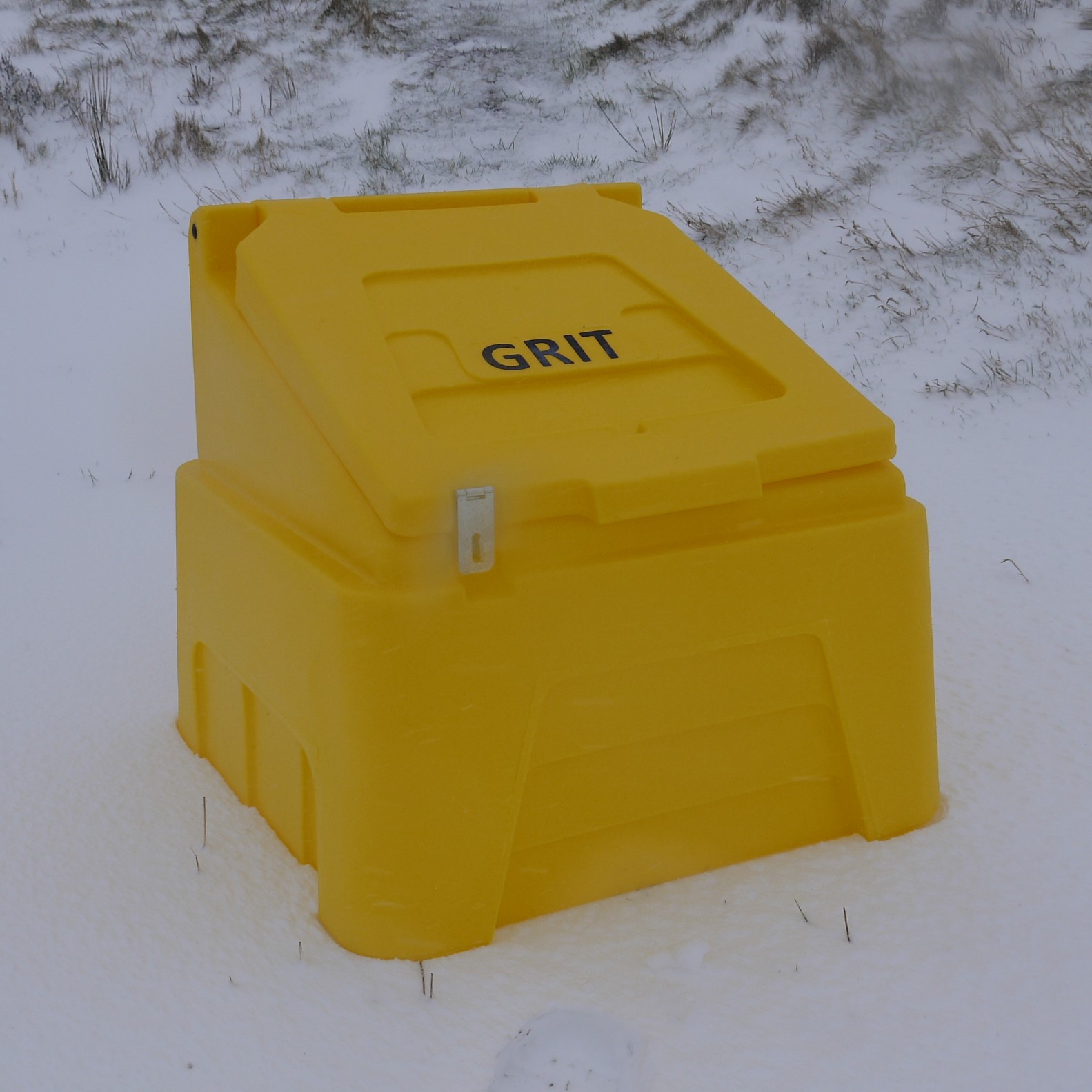Why it’s important to ensure you’re storing your grit correctly.
January 21,2022
4.9 Rated
On Reviews.io
Secure Online Shopping
On all orders
Stockists of
Major UK Manufacturers
As
we head into winter weather, you’ll appreciate having a grit bin on your
premises as the likelihood of snow and ice underfoot increases.
While storing a grit bin outdoors is correct, they’re designed for this purpose
after all, it’s important to protect internal grit contents from the elements or
it won’t melt winter snow and ice properly.
Whilst we often say ‘grit’ is stored in grit bins and spread on our roads and
pathways it’s usually rock salt and white (ish) in colour.
What
is rock salt and how does it melt snow and ice?
Rock salt is a mixture of
sodium chloride and up to 10% of other materials such as clay and gravel. This
creates a saline solution when it comes into contact with moisture on roads and
paths due to it having a lower freezing temperature than water.
This is how rock salt causes existing snow and ice to melt and help prevent it
from forming again (within reason).
To do its job properly, the rock salt is being continuously
diluted, to a point when it eventually doesn’t work anymore so a further application
is needed.
Timing is also a crucial aspect when you’re spreading rock salt. If it’s laid
down too early on a dry road or path, it’ll simply be blown away or displaced.
If it’s spread on a surface that’s already frozen it’ll work, but not as
effectively.
Ideally rock salt needs to go down on a damp road or path when ice or snow is
just forming. It might sound like a very narrow window (and it definitely is),
but you’ve got a better chance of melting it if you’ve got dry grit to start
with!
The
simple truth is wet grit (or rock salt) doesn’t work well against ice and snow.
If
rock salt gets wet too early, say from exposure to rain while it’s still inside
a grit bin, the sodium chloride will be dissolved and partially washed away,
making the ‘grit’ far less effective.
Local councils have plenty of experience in discovering that wet grit is
notably less effective at melting snow and ice than fresh grit that’s been
sufficiently protected.
So
how can you protect your grit?
The simple answer is to
keep the lid of your grit bins closed!
To help assist many grit bins have hasp and
staples on the lids which help latch the lids shut when not in use. They also help
keep the lids shut in high winds. A padlock can also be added for security if
required.
So where can I get a
grit bin with a hasp and staple on the lid?
Here at Roadware of
course!
We’re one of the UKs largest suppliers of grit bins and rock salt with a range of
quality designs in different colours and sizes to suit. They’re all
manufactured in the UK and rotationally moulded to guarantee durability and
longevity.
Click here to view our grit bin and salt spreader range.

Image source Roadware Ltd
4.9 Rated
On Reviews.io
Secure Online Shopping
On all orders
Stockists of
Major UK Manufacturers